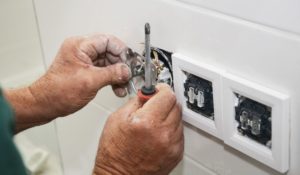As technology advances and our reliance on electrical devices grows, it’s essential to ensure that your home’s electrical system can handle the increased demand. Upgrading your electrical system not only enhances safety but also allows you to enjoy the convenience of modern electrical appliances and technologies. In this blog, we’ll explore when and how to upgrade your home’s electrical system.
When to Consider Upgrading
Several signs indicate that it may be time to upgrade your home’s electrical system:
- Frequent Circuit Breaker Tripping: If your circuit breakers trip frequently, it could be a sign that your electrical system is overloaded. Upgrading the electrical panel and circuits can prevent this issue.
- Outdated Wiring: Homes with older wiring, such as knob-and-tube or aluminum wiring, may be at risk of electrical fires and may not meet current electrical code standards. Consider rewiring your home to ensure safety and compliance.
- Not Enough Outlets: In today’s digital age, the demand for electrical outlets is higher than ever. If you find yourself using multiple power strips and extension cords, it’s time to add more outlets through an upgrade.
- Flickering Lights: Persistent flickering lights may indicate voltage fluctuations, which can be addressed with an electrical system upgrade.
- Safety Concerns: If you have concerns about the safety of your electrical system, such as exposed wires, sparking outlets, or outdated components, it’s crucial to upgrade for your family’s safety.
How to Upgrade Your Electrical System
Upgrading your electrical system involves several steps, and it’s essential to hire a licensed electrician for the job. Here’s an overview of the process:
- Assessment: Begin by scheduling an electrical assessment with a licensed electrician. They will inspect your current electrical system, identify any issues, and recommend the necessary upgrades. This assessment will help you understand the scope of the project and its cost.
- Electrical Panel Upgrade: In many cases, the electrical panel (or service panel) is the first component that needs upgrading. This panel distributes electricity throughout your home and ensures circuits are protected from overloads. An electrician may recommend a larger panel with more circuit breakers to accommodate increased electrical loads.
- Rewiring: If your home has outdated wiring, the electrician may recommend rewiring. This involves replacing old wiring with new, safer options, such as copper or modern aluminum wiring. Rewiring may be done selectively in specific areas or as a complete overhaul, depending on your needs.
- Adding Outlets: To meet modern electrical demands, consider adding more outlets in key areas of your home. This can reduce the need for power strips and extension cords, improving safety and convenience.
- GFCI and AFCI Outlets: Installing Ground Fault Circuit Interrupter (GFCI) and Arc Fault Circuit Interrupter (AFCI) outlets in bathrooms, kitchens, and bedrooms enhances electrical safety by detecting and preventing electrical faults.
- Upgrade Lighting: Upgrading your lighting fixtures to energy-efficient LED bulbs can reduce energy consumption and lower your utility bills.
- Compliance with Electrical Codes: Ensure that all upgrades meet local electrical codes and regulations. Compliance is essential for safety and to prevent potential issues when selling your home.
- Regular Maintenance: After upgrading, follow a regular maintenance schedule to keep your electrical system in optimal condition. This includes checking outlets, switches, and electrical panels for any signs of wear or damage.
Benefits of Upgrading Your Electrical System
Investing in an electrical system upgrade offers several benefits:
- Enhanced Safety: A modern electrical system is safer and less prone to electrical faults, reducing the risk of electrical fires and shocks.
- Improved Convenience: With additional outlets and upgraded wiring, you can use more electrical devices simultaneously without overloading circuits.
- Energy Efficiency: Upgrading to energy-efficient lighting and appliances can reduce energy consumption and lower your utility bills.
- Increased Home Value: An upgraded electrical system adds value to your home and can make it more attractive to potential buyers if you decide to sell.
- Peace of Mind: Knowing that your electrical system is up to code and in good working condition provides peace of mind for you and your family.
- Accommodating Modern Technology: An upgraded electrical system can easily accommodate modern technology, including smart home devices, electric vehicle charging stations, and more.
Smart Home Integration
As technology continues to advance, many homeowners are integrating smart home devices into their electrical systems. Smart thermostats, lighting, security systems, and voice-controlled assistants are becoming increasingly popular. When upgrading your electrical system, consider making it smart-ready by:
- Installing a Dedicated Network: Ensure your home has a robust Wi-Fi network to support smart devices. A strong network is essential for seamless communication between devices.
- Adding Smart Switches and Outlets: Replace standard switches and outlets with smart versions that can be controlled remotely or through voice commands.
- Integrating a Smart Home Hub: A central hub can connect and control various smart devices, making it easier to manage your smart home ecosystem.
- Upgrading to a Smart Meter: Smart meters provide real-time data on your energy usage, helping you make informed decisions about energy conservation.
- Installing Electric Vehicle (EV) Charging: If you own an electric vehicle, consider installing a dedicated EV charging station in your garage or driveway.
Conclusion
Remember that while smart home technology offers convenience and energy savings, it’s essential to prioritize security and protect your network from cyber threats. Use strong, unique passwords for your smart devices and keep their firmware up to date.





